Welcome! Here are the website rules, as well as some tips for using this forum.
Need to contact us? Visit https://heatinghelp.com/contact-us/.
Click here to Find a Contractor in your area.
If our community has helped you, please consider making a contribution to support this website. Thanks!
steam boiler blowdown, dirty sight glass help
Options
brybo86
Member Posts: 8
To start
I have zero experience with steam boilers as we have always had gas forced air in our home.
Sister and brother in law have moved into a house with a fuel oil steam boiler. And we are visiting them for a few days.
I have been researching steam boilers all day.
It is a Burnham Megasteam oil boiler. It looks like a beast.
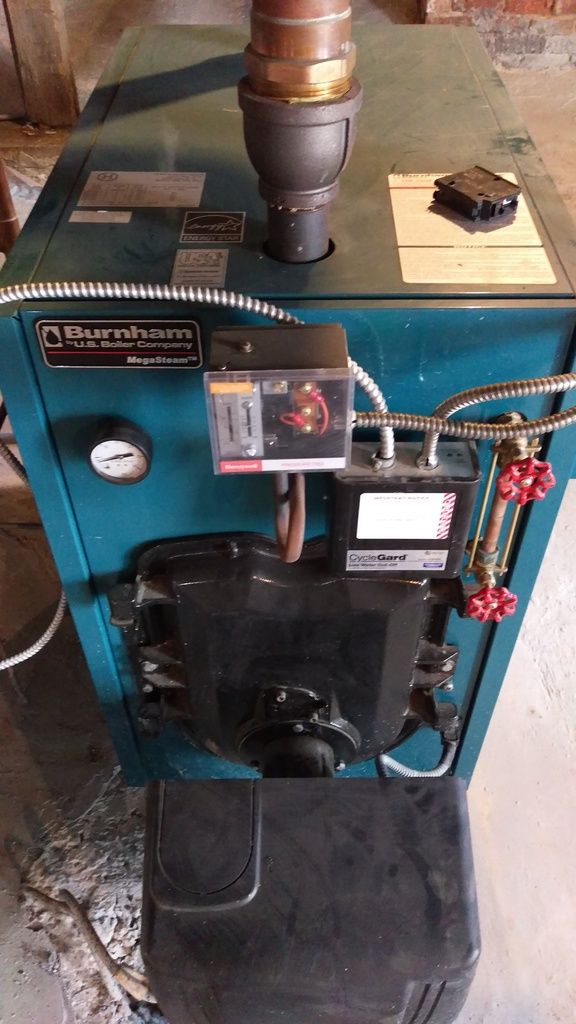
They had a couple radiators that were not getting hot. I played around with the steam vent and on off screw valves and got them working. Most in the house are adjustable Hoffman steam vents 1-6 setting.
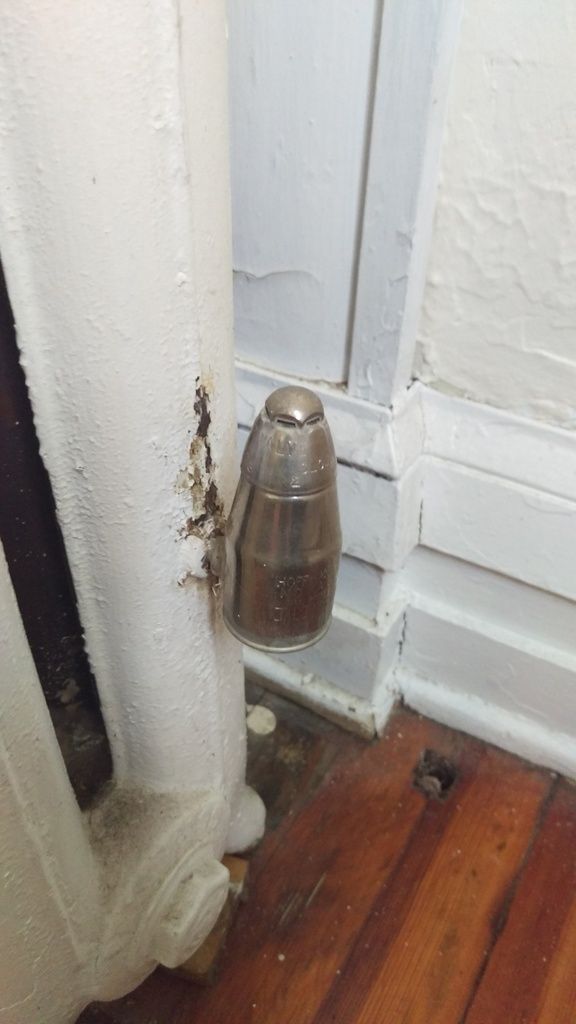
One of the vents was upside down and sounds like there is water in it, it there a way to make it work again? Put it in the oven for awhile and boil the water out?
It is a 2 story house, I have all of the vents on setting 1 on the first floor. On the second floor I set them all to 1 and have now increased the colder radiators to 2. Heat seems relatively consistent between rooms. Upstairs is probably 3-4 degrees cooler than downstairs. Maybe I need to up the 2ND floor vents to 3-4? Although it isn't terrible because mostly just sleeping upstairs and it doesn't need to be so warm.
Anyways my main question is about boiler blow down. And needed maintenance.
Here is the sight glass which I have read should be clear.
As you can see it is really dirty or maybe even full of mud. In reading I may need to remove this and clean it by hand?
When the boiler is firing I don't see any movement in the gauge/glass. I'm guessing close both top and bottom valves and remove the glass or is it really complicated?
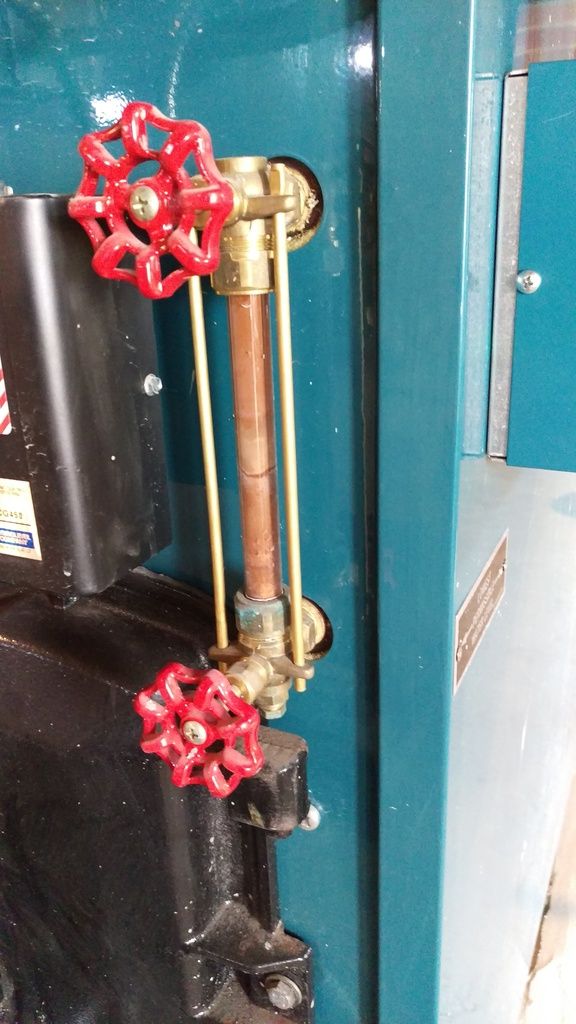
Backside
I think I need to open the drain at the bottom of this pic which will drain the boiler.
I have read conflicting info as to this being done with boiler off to simply drain or with boiler on to violently drain and loosen up more gunk.
Also I have read about adding a cleaning solution then operate the boiler without building pressure?
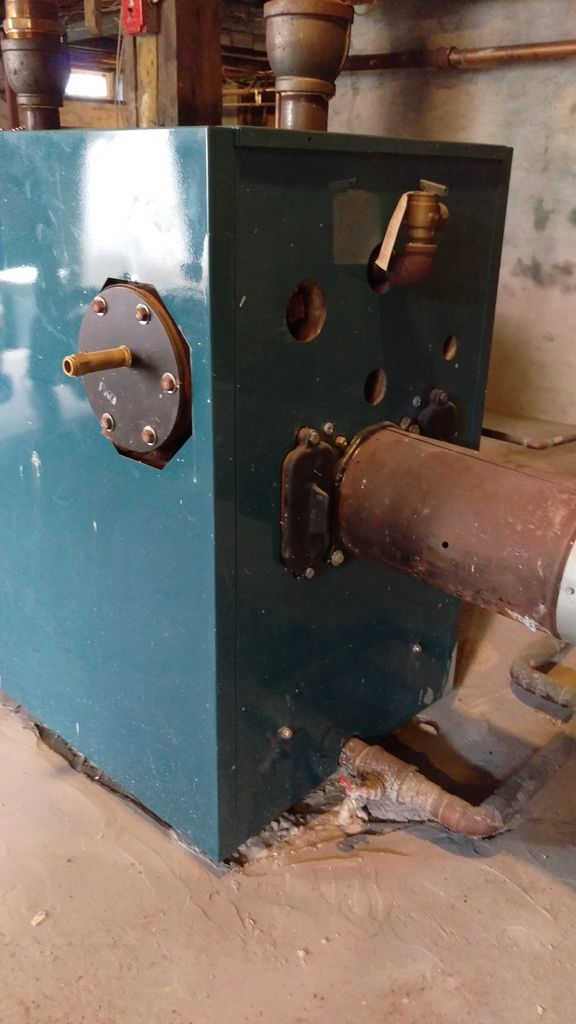
It has a programmable water feeder with a switch on top that says "feed". Not sure how to operate this or when.


What should my procedure step by step to perform the blowdown?
Thx all in advance!
I have zero experience with steam boilers as we have always had gas forced air in our home.
Sister and brother in law have moved into a house with a fuel oil steam boiler. And we are visiting them for a few days.
I have been researching steam boilers all day.
It is a Burnham Megasteam oil boiler. It looks like a beast.

They had a couple radiators that were not getting hot. I played around with the steam vent and on off screw valves and got them working. Most in the house are adjustable Hoffman steam vents 1-6 setting.

One of the vents was upside down and sounds like there is water in it, it there a way to make it work again? Put it in the oven for awhile and boil the water out?
It is a 2 story house, I have all of the vents on setting 1 on the first floor. On the second floor I set them all to 1 and have now increased the colder radiators to 2. Heat seems relatively consistent between rooms. Upstairs is probably 3-4 degrees cooler than downstairs. Maybe I need to up the 2ND floor vents to 3-4? Although it isn't terrible because mostly just sleeping upstairs and it doesn't need to be so warm.
Anyways my main question is about boiler blow down. And needed maintenance.
Here is the sight glass which I have read should be clear.
As you can see it is really dirty or maybe even full of mud. In reading I may need to remove this and clean it by hand?
When the boiler is firing I don't see any movement in the gauge/glass. I'm guessing close both top and bottom valves and remove the glass or is it really complicated?

Backside
I think I need to open the drain at the bottom of this pic which will drain the boiler.
I have read conflicting info as to this being done with boiler off to simply drain or with boiler on to violently drain and loosen up more gunk.
Also I have read about adding a cleaning solution then operate the boiler without building pressure?

It has a programmable water feeder with a switch on top that says "feed". Not sure how to operate this or when.


What should my procedure step by step to perform the blowdown?
Thx all in advance!
0
Comments
-
With boiler off for 30 minutes I let some water out of the lower drain it was a little brown but then cleared up within 5 seconds.
With boiler firing if I open the lower drain for a second and then close it again the water is very dark.
0 -
Please post pictures of the piping above the boiler, I've got a feeling what we're going to see isn't going to be good.
Also, post a picture showing the entire flue pipe please. This is the large pipe coming out of the back of the boiler hopefully going to a chimney.
The pressure relief valve is also not piped correctly and is dangerous to say the least.
Single pipe 392sqft system with an EG-40 rated for 325sqft and it's silent and balanced at all times.
0 -
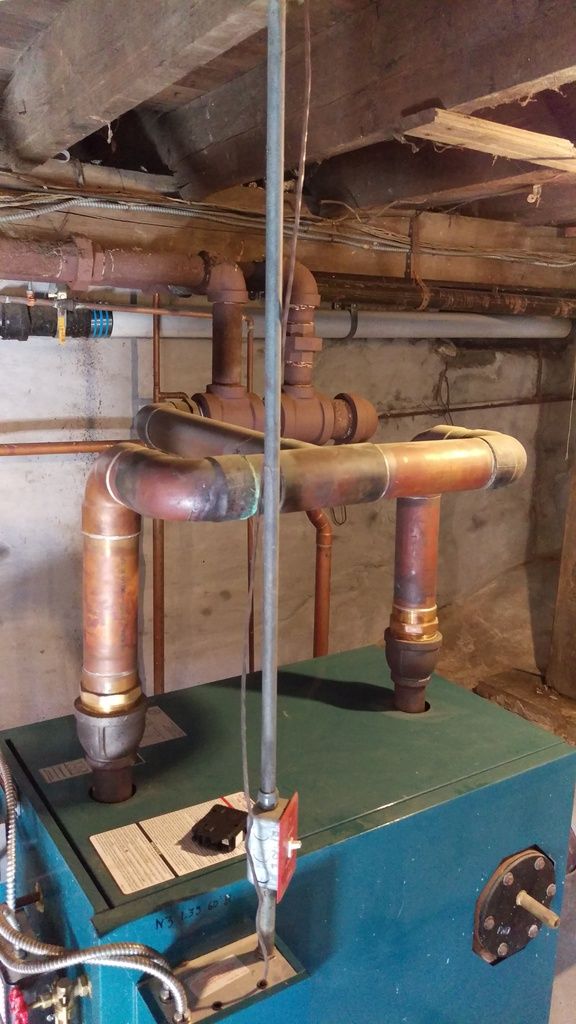
Piping above boiler, some looks like new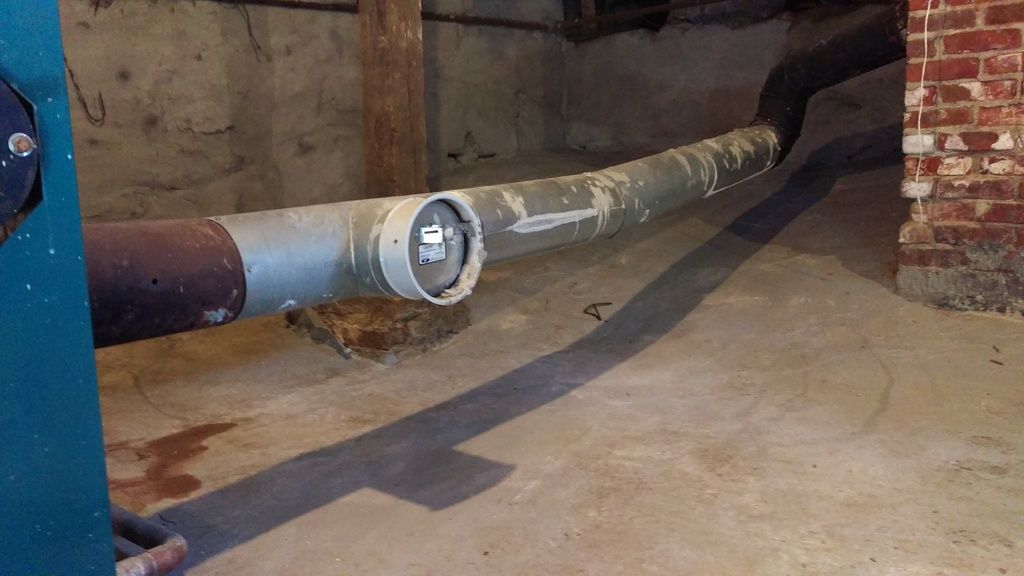
Flue venting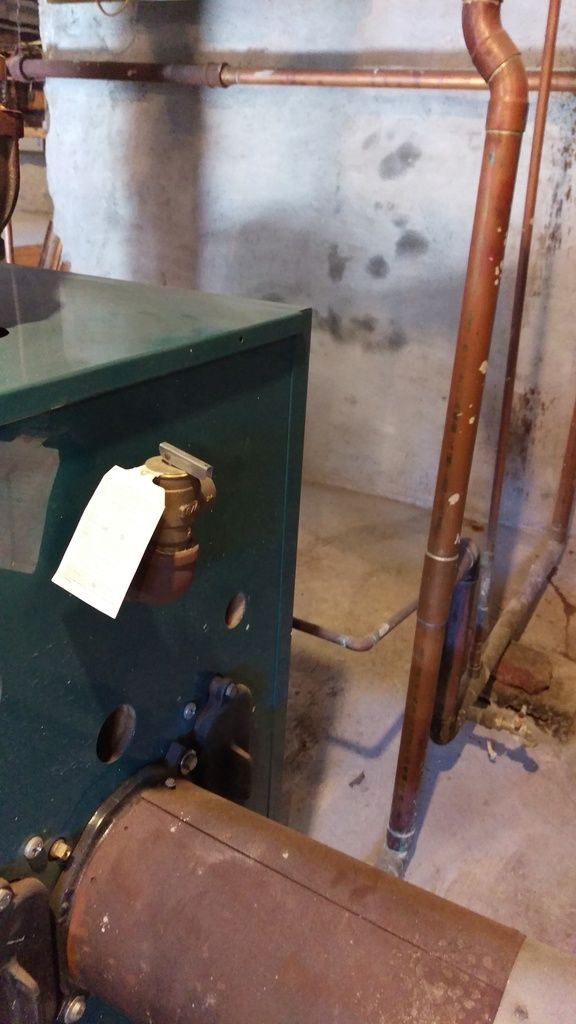
Safety valve, If his opened up looks like water would spray on a couple copper pipes and then the cement wall.
Also the house was built circa 1850. Foundation is made of 3ft-4ft long stones mortared together. To give a little time reference.0 -
The boiler isn't piped correctly and this is guaranteed to result in wet steam.
The safety valve is not piped to code, and I have a hard time believing that flue is piped to code, but I'll be honest, I don't know as I'm not a professional. I can't see an unsupported super long flue running close to the ground being acceptable though.
Everything wrong in those pictures has nothing to do with the houses age as it was all done in the past decade.
Single pipe 392sqft system with an EG-40 rated for 325sqft and it's silent and balanced at all times.
0 -
Agree the gauge glass needs to be clean, but it would be at the bottom of a really long list of problems with that boiler. Chris is right it's piped wrong. It shouldn't be copper AND the piping layout is incorrect. The flue pipe, I hope a pro comments with what code is, but if that's legal it shouldn't be. Your sister needs a steam pro to come in and look at that. Where does she live we may know someone close by that knows steam. Whoever installed that clearly does not.0
-
Got the glass out
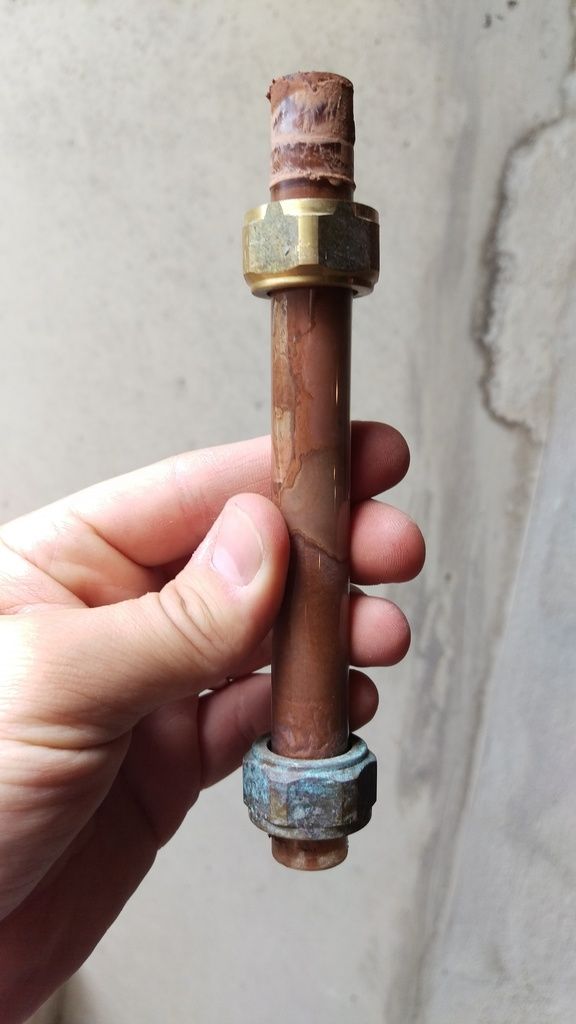
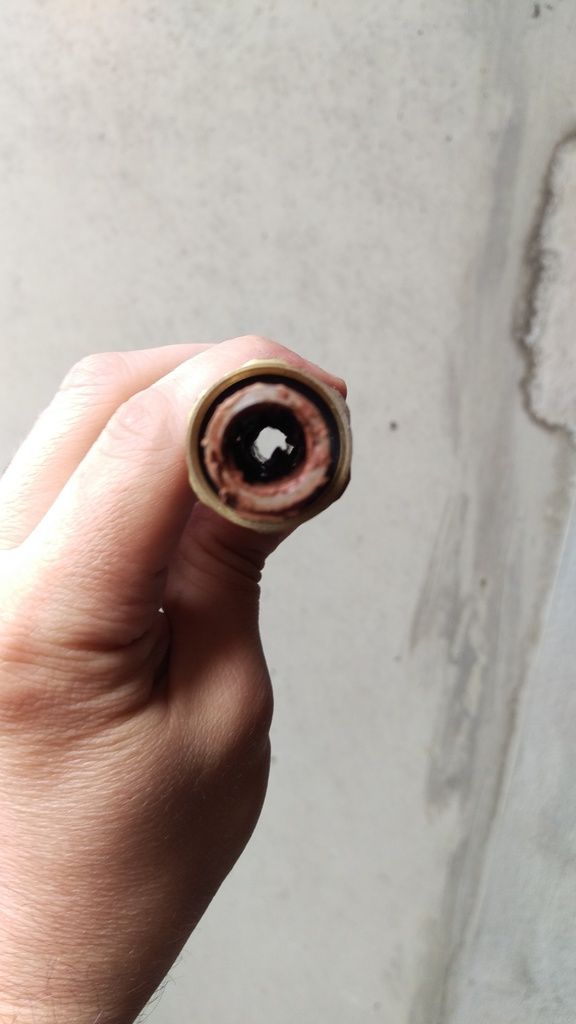
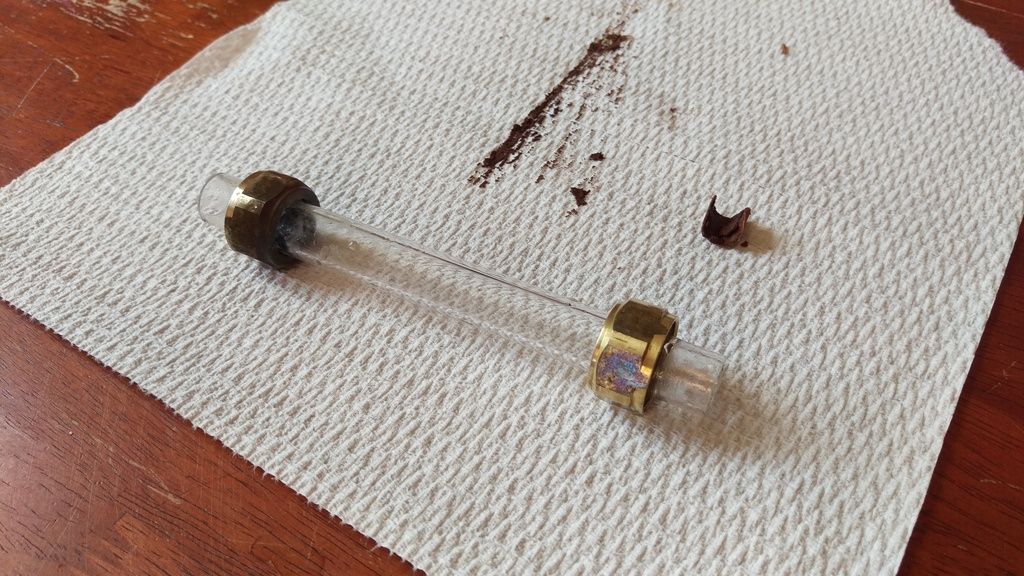
Got it all cleaned out, used some CLR and a small plastic craft paint brush.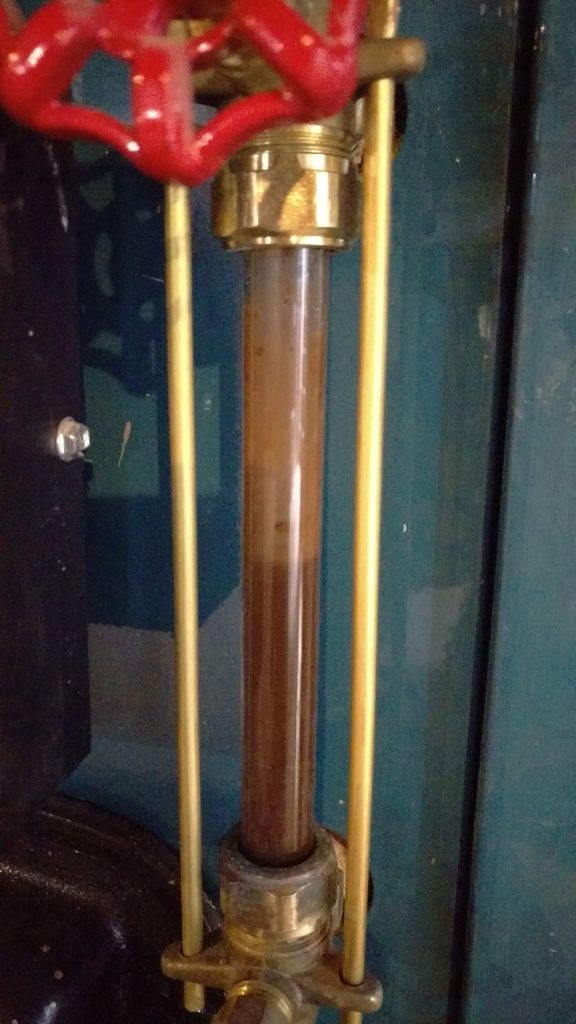
This pic is with the boiler firing, it is still very dirty water, should I slowly remove and replace water until it runs clean?
If I turn off the boiler and let it sit the water will run clear.
Any problem with removing a gallon then replacing a gallon while it is running until clear?
0 -
Probably won't hurt to replace the water, but as others have already said, the major problems are with the overall piping. All that copper (above the water line) will cause (and may already have caused) the internals of that boiler to rot out. I had a similar situation when I moved into my house last year, ultimately replaced the boiler this past spring.
I think the best course of action is to find a pro that can redo the piping, unfortunately.Peerless 63-03, 118,000 BTU (308 sqft), single-pipe steam system connected to 286 EDR of radiation, 30ft of baseboard and indirect DHW
3PSI gauge0 -
Having the flue piping go down then up isn't acceptable. The pressure relief is just plain dangerous. Where are you located? P
Btw, great job on the cleaning.Two-pipe Trane vaporvacuum system; 1466 edr
Twinned, staged Slantfin TR50s piped into 4" header with Riello G400 burners; 240K lead, 200K lag Btus. Controlled by Taco Relay and Honeywell RTH6580WF1 -
Dutchess county new York0
-
Get yourself some Steammaster tablets. http://www.supplyhouse.com/Rectorseal-68732-Steamaster-Tablet
The piping is wrong, and the flue runs unsupported as already mentioned. Also the safety valve is an issue.0 -
The flue venting is totally wrong. Your not supposed to run a flue that far with horizontal piping. I suppose you could but it is supposed to be on a continuing incline toward the chiminy. Please be sure you have good new carbon monoxide detectors in that space.
The copper on the riser and header is NOT recommended and should be replaced.DL Mechanical LLC Heating, Cooling and Plumbing 732-266-5386
NJ Master HVACR Lic# 4630
Specializing in Steam Heating, Serving the residents of New Jersey
https://heatinghelp.com/find-a-contractor/detail/dl-mechanical-llc
https://m.facebook.com/DL-Mechanical-LLC-315309995326627/?ref=content_filter
I cannot force people to spend money, I can only suggest how to spend it wisely.......0 -
I'll never understand how it happens that some installers put so much effort into doing it all wrong.Contact John "JohnNY" Cataneo, NYC Master Plumber, Lic 1784
Consulting & Troubleshooting
Heating in NYC or NJ.
Classes0 -
It's easy, doing it correctly would probably take a similar amount of effort. The real difference is education, some people CHOOSE to not educate themselves and do work like in those pictures. In other words they WANT to be dumb...not seeking out the education is where the real difference in effort is.0
-
We have to leave their house today but I'm curious what problems the current incorrect piping will cause?
All of the radiators seem to get nice and hot,
no water squirting from steam vents just air.
No steam clanging/banging when the radiators first start warming, they are all quiet.
Many of the pipes are 150yrs old0 -
I highly doubt those pipes are 150 years old. 80-100 maybe but not 150. The system likely isn't original to the house if the house is that old. My 1860s house originally had multiple wood stoves but a steam system was installed in the early 1920s.brybo86 said:We have to leave their house today but I'm curious what problems the current incorrect piping will cause?
All of the radiators seem to get nice and hot,
no water squirting from steam vents just air.
No steam clanging/banging when the radiators first start warming, they are all quiet.
Many of the pipes are 150yrs old
The old pipes are not the problem. The modern work, if you can call it that, is the problem
The short answer regarding the near boiler steam piping is it's likely wasting a ton of money. Wet steam doesn't transfer heat near as well so the boiler can't get it's heat to the radiators as fast and efficiently as it should.
The flue pipe is downright dangerous and the pressure relief is a concern and against code as well.
Do what you want with the steam piping but please get the safety concerns rectified immediately.Single pipe 392sqft system with an EG-40 rated for 325sqft and it's silent and balanced at all times.
0 -
Efficiency is the big one that jumps out for me. Look at the way it's piped, now imagine the steam is a car coming out the top of the boiler. In the case of that boiler 2 cars one from each riser. Now what happens to those cars when they get to that tee? The have a head on collision, hence the reason that is called a colliding header. Just because everything gets hot doesn't mean it's right or efficient. Also the copper, copper expands and contracts at a MUCH different rate than cast iron. So the copper expands a lot more than the cast iron, again look at how it's piped the sections of the boiler run front to back so the copper expands more than the cast iron what will happen? It puts pressure on the sections trying to pull them apart. Next is stress on the copper joints. The drastic expansion and contraction of the copper will stress those joints possibly to the breaking point and then they leak. I also just noticed it looks like the pressure is set MASSIVELY too high. It appears to be set somewhere around 5 PSI, but it's tough to tell for sure in the pics. The pressuretrol should be set pretty much as low as it can go. Running it that high is just burning fuel for no reason, it also indicates the installers are totally clueless if there was any doubt. If the pressure NEEDS to be that high to get anything out of the heat then it indicates other issues most likely inadequate main venting. I will reiterate what Chris said about the safety issues. You know how people say yes it's a problem, but the sky isn't falling. In this case, the sky is falling. That venting needs to be addressed ASAP as does the safety valve. How much is human life worth? I am assuming your sister either didn't have a home inspection or her home inspector was a complete and total moron not to see those things.0
-
I did significantly decrease the steam vents settings of the radiators limiting flow to the first floor radiators, this worked to send more steam to the 2ND floor radiators.
Would this cause the increase in psi you are talking about?
If so,
I could open ALL of the vents a little to decrease the system pressure?
Or are you talking about the boiling pressure?0 -
The setting on the pressuretrol. The picture is a bit blurry, but it looks to me like it's set pretty high and it should not be. You want this system to be kept as low as possible. The pressuretrol is technically a safety device, but in the case of inadequate main venting (not radiator venting) or an oversized boiler it will limit the operating pressure by shutting down the burner. To really operate at a low pressure and not have the pressuretrol come into play the boiler needs to be correctly sized, piped and you need very good main venting.
http://i1222.photobucket.com/albums/dd499/brybo86/IMAG0663.jpg0 -
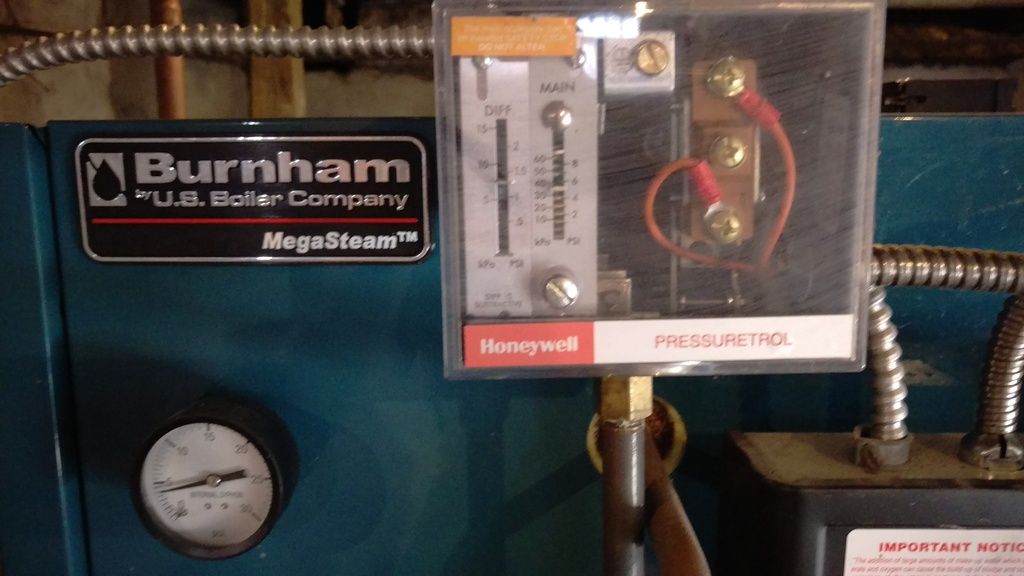
Pic of the boiler running this afternoon with a little better shot of the gauges0 -
That pressure is MUCH too high, it should be less than 2 PSI. Try turning it down to 2 on the main scale and 0.5 on the Diff scale.
You can always turn it back to where it was if that makes things worse.
BobSmith G8-3 with EZ Gas @ 90,000 BTU, Single pipe steam
Vaporstat with a 12oz cut-out and 4oz cut-in
3PSI gauge1 -
Where's the "crucify" button?
 I will say they're luck to have the mst boiler and the pressure issue probably lies with the mains venting and/or attached edr. The main venting is more important than cleaning at this point, but the exhaust and hp relief valve should be brought to code for safety's sake. Two-pipe Trane vaporvacuum system; 1466 edr
I will say they're luck to have the mst boiler and the pressure issue probably lies with the mains venting and/or attached edr. The main venting is more important than cleaning at this point, but the exhaust and hp relief valve should be brought to code for safety's sake. Two-pipe Trane vaporvacuum system; 1466 edr
Twinned, staged Slantfin TR50s piped into 4" header with Riello G400 burners; 240K lead, 200K lag Btus. Controlled by Taco Relay and Honeywell RTH6580WF0
Categories
- All Categories
- 87.3K THE MAIN WALL
- 3.2K A-C, Heat Pumps & Refrigeration
- 61 Biomass
- 427 Carbon Monoxide Awareness
- 119 Chimneys & Flues
- 2.1K Domestic Hot Water
- 5.8K Gas Heating
- 114 Geothermal
- 165 Indoor-Air Quality
- 3.7K Oil Heating
- 76 Pipe Deterioration
- 1K Plumbing
- 6.5K Radiant Heating
- 395 Solar
- 15.6K Strictly Steam
- 3.4K Thermostats and Controls
- 56 Water Quality
- 51 Industry Classes
- 50 Job Opportunities
- 18 Recall Announcements




